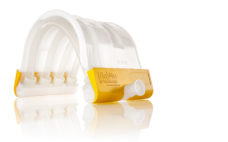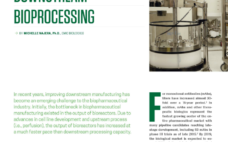As the use of disposable systems within biopharmaceutical manufacturing has moved from niche preclinical applications to large scale commercial processes. This has led to the requirement for novel technologies that improve processing throughput and allow manufacturers to increase their output. To this end, WMFTG has developed a new pumping technology to enable end-users to meet their downstream processing needs for unit operations such as chromatography and tangential flow filtration (TFF). Quantum allows end-users to use novel peristaltic technology for their…
Monday, May 22, 2017 Daily Archives
Achieving Continuous Downstream Bioprocessing Through Multi-Column Chromatography (MCC)
In recent years, improving downstream manufacturing has become an emerging challenge to the biopharmaceutical industry. Initially, the bottleneck in biopharmaceutical manufacturing existed in the output of bioreactors. Due to advances in cell line development and upstream process (i.e., perfusion), the output of bioreactors has increased at a much faster pace than downstream processing capacity. Therapeutic biologics, including monoclonal antibodies (mAbs), represent the fastest growing segment of the pharmaceutical market. By 2019, the biological market is expected to exceed 20% of…
BIOne – Single-Use Bioreactor System
Convert your existing benchtop glass bioreactor to a single-use bioreactor in seconds. Distek, Inc. has developed a benchtop scale single-use bioreactor (SUB) system for mammalian cell growth and recombinant protein production. The pre-sterilized BIOne system is engineered with a disposable headplate welded to a triple-layered liner that can be easily inserted into a non-sterile bioreactor glass vessel, converting it to a sterile, disposable SUB within a matter of seconds. Simply remove your existing headplate and place the preassembled and irradiated…
Continuous Processing Optimization With Smarter Tools
Single-use technology (SUT) has long been viewed as a viable solution to today’s biopharmaceutical manufacturing challenges. It offers the flexibility to change a production configuration to meet demand while also offering many other cost benefits, such as savings related to the elimination of clean-in-place (CIP) and sterilization-in-place (SIP) processes. However, traditional and fed-batch models fail when trying to adapt to single-use flexibility due to the required rewriting of code and revalidation. The best way to use the flexibility of single-use…




